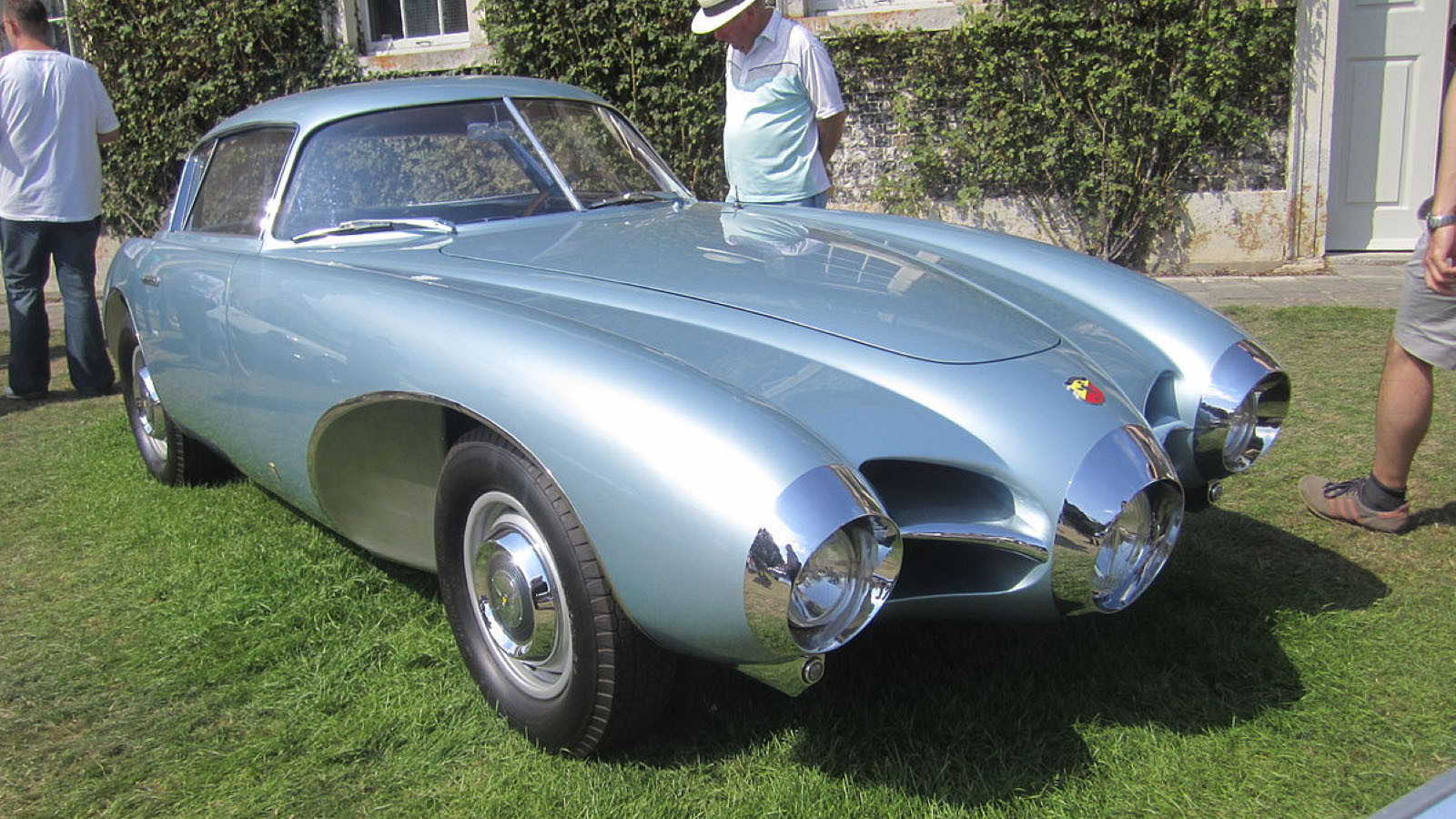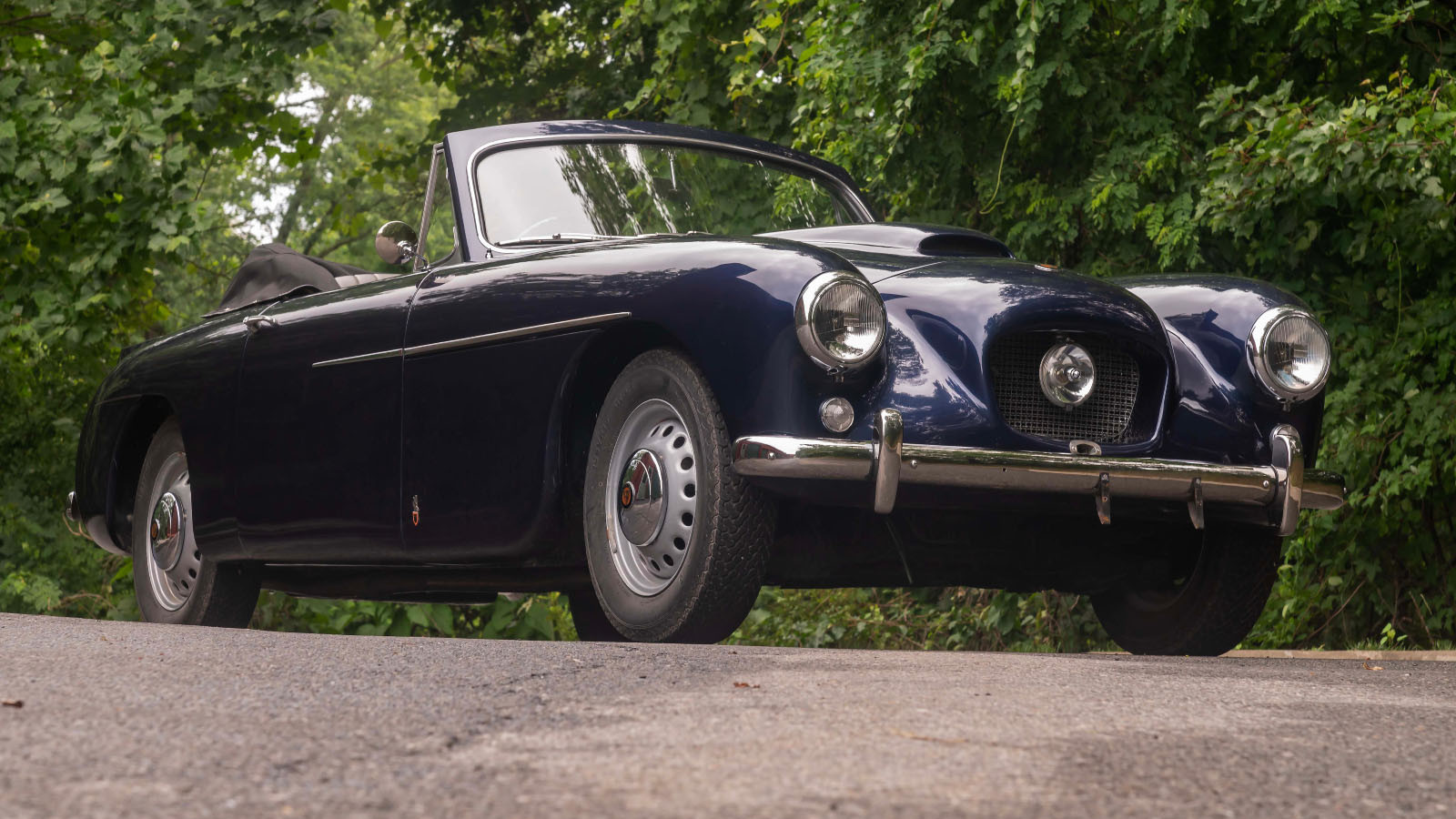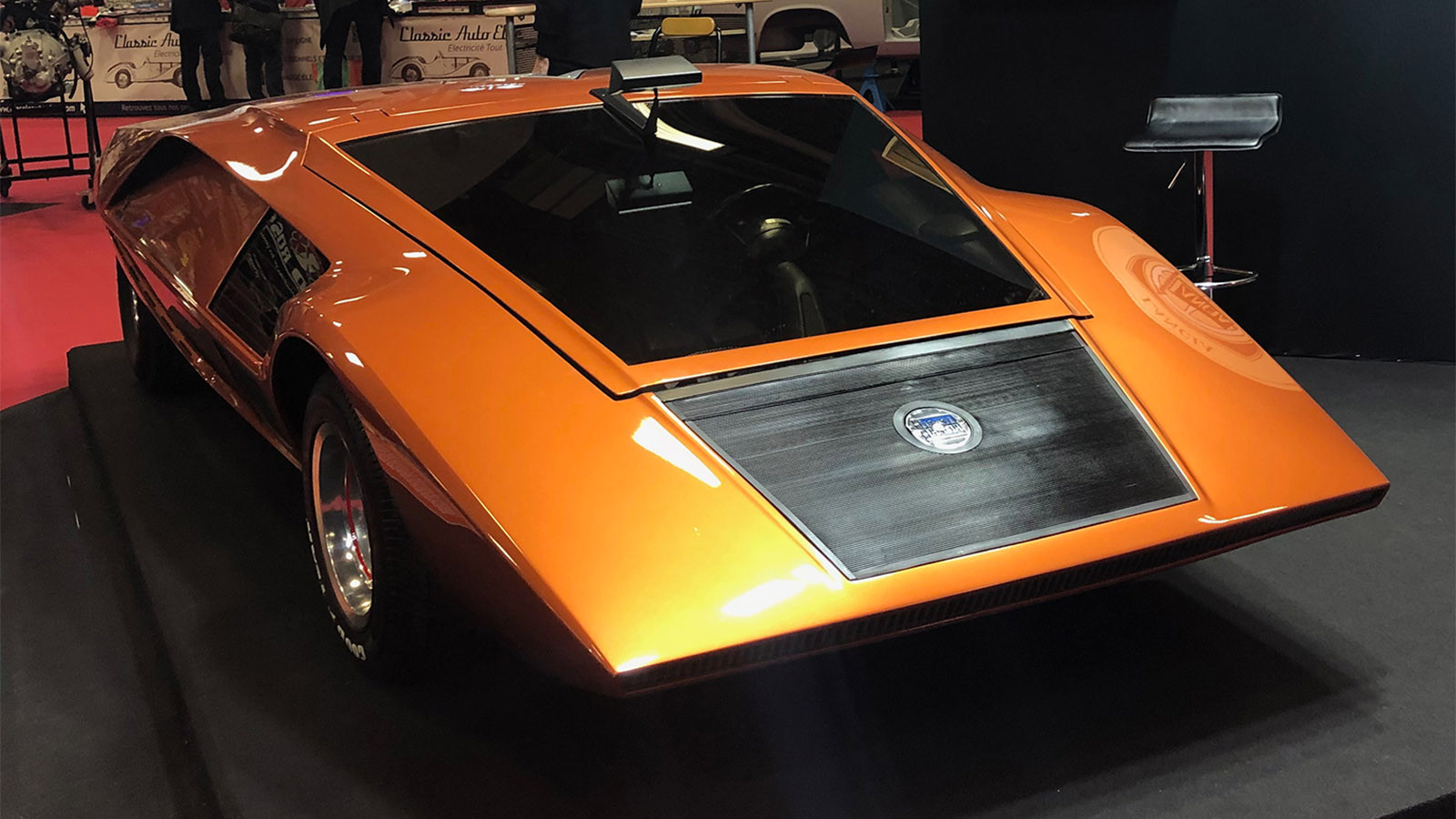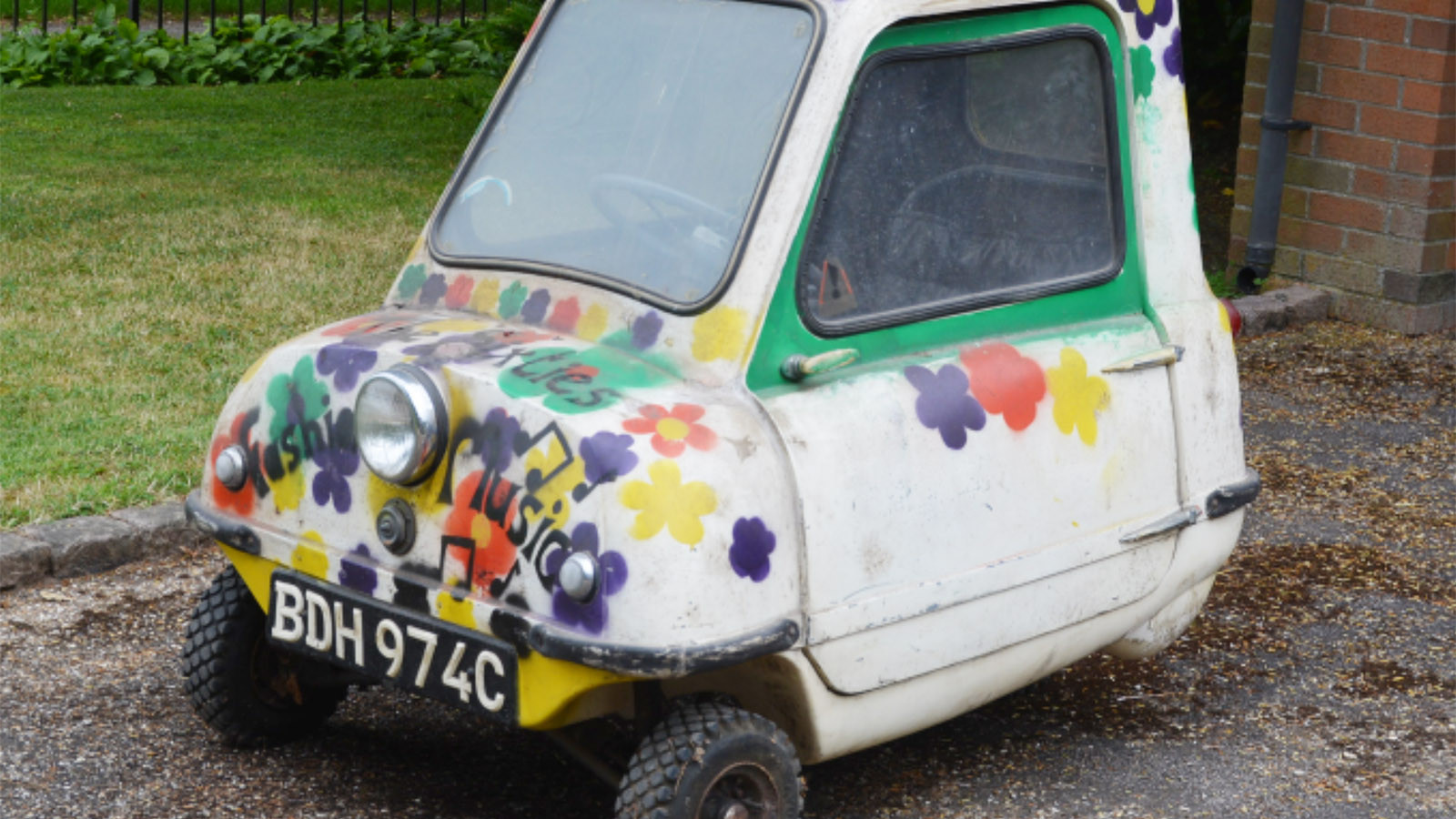-
 © Luc Lacey/Classic & Sports Car
© Luc Lacey/Classic & Sports Car -
 © Sicnag/Creative Commons licence https://creativecommons.org/licenses/by/2.0/deed.en
© Sicnag/Creative Commons licence https://creativecommons.org/licenses/by/2.0/deed.en -
 © Will Williams/Classic & Sports Car
© Will Williams/Classic & Sports Car -
 © Amy Shore
© Amy Shore -
 © Luc Lacey/Classic & Sports Car
© Luc Lacey/Classic & Sports Car -
 © Alexander Migl/Creative Commons licence https://creativecommons.org/licenses/by-sa/4.0/deed.en
© Alexander Migl/Creative Commons licence https://creativecommons.org/licenses/by-sa/4.0/deed.en -
 © Bonhams|Cars
© Bonhams|Cars -
 © Simon Hucknall
© Simon Hucknall -
 © GM Archive
© GM Archive -
 © Bonhams|Cars
© Bonhams|Cars -
 © Bring A Trailer
© Bring A Trailer -
 © Remi Dargegen/RM Sotheby’s
© Remi Dargegen/RM Sotheby’s -
 © Lizzie Pope/Classic & Sports Car
© Lizzie Pope/Classic & Sports Car -
 © Bonhams|Cars
© Bonhams|Cars -
 © Panhard
© Panhard -
 © Brightwells
© Brightwells -
 © Bonhams|Cars
© Bonhams|Cars -
 © Manor Park Classics
© Manor Park Classics -
 © James Mann/Classic & Sports Car
© James Mann/Classic & Sports Car -
 © Bonhams|Cars
© Bonhams|Cars -
 © Bonhams|Cars
© Bonhams|Cars -
 © Patrick Ernzen/RM Sotheby’s
© Patrick Ernzen/RM Sotheby’s
-
Lighting from the middle
There’s undoubtedly a modern-day regulation that prevents auto makers from positioning a headlight in the center of a car’s grille.
But back in the mists of time, there were plenty who seemed to think that it added to a model’s appeal.
In many cases it was clearly a design affectation, rather than an effort to provide more illumination for drivers, which is why the common ‘cyclops’ descriptor is somewhat unfair.
After all, the image of a Greek giant with a single eye in the middle of his forehead doesn’t quite square with the luxuriant beauty of an Abarth 1500 Biposto.
But judge for yourself, because here, in alphabetical order, are 21 cars whose headlamp beams shone from the center.
-
1. 1952 Abarth 1500 Biposto
Part of Carlo Abarth’s brief to Bertone’s designer Franco Scaglione was to let his imagination go in the creation of the 1500 Biposto coupe, a one-off concept unveiled at the 1952 Turin motor show.
There is no record of why the Biposto’s sleek, aerodynamic design incorporated a boldly extended central headlight, but US car company Packard was impressed enough to purchase the concept to inspire its own design team.
The drivable Biposto, powered by a four-cylinder, 1.5-liter Fiat engine, was sold to a US journalist a year later and driven sparingly for the next two decades.
-
2. 1971 Alpine A310
The first-series Alpine 310’s central headlamps formed part of a bank of six lights that extended across the front of the car.
However, its lighting performance perhaps scored higher than that at its wheels, which, with its rear-mounted, four-cylinder engine generating just 126HP, was criticized as being mediocre (though from ’73, a change from carburetors to fuel injection improved this somewhat).
With its fiberglass body underpinned by a steel backbone chassis, the A310 was restyled in 1976, and gained a more potent V6 engine. Alas, its central headlights were no more, though…
-
3. 1980 Aston Martin Bulldog
Autocar’s cover line in April 1980 said it all: ‘BULLDOG. It’s British – and could be the world’s fastest road car’.
Part of the Aston Martin Bulldog’s aero-armory enabling it to hit 200mph was a bank of five front lights – three main- and two dipped-beam – extending across the front of the car, that were hidden by a sliding panel halfway up its nose, which revealed them only when required.
Of course, having 608HP on tap from its 5.3-liter, twin-turbocharged V8 engine also helped the starkly elegant Bulldog in its quest for the double-ton.
And while it only topped 191mph back in the day, in 2023 it did finally break the 200mph barrier.
-
4. 1949 Austin A90 Atlantic
The British government’s post-war ‘export or die’ edict was the impetus behind the creation of the Austin A90 Atlantic, which unashamedly targeted North American sales in name and style.
Available initially as a four-seat convertible, then shortly after launch as a two-door coupe, the Atlantic’s distinctive central light let into its front air-intake was, in fact, the car’s main beam.
Other highlights included powered windows, plus a hydraulically operated hood for the convertible.
-
5. 1937 BMW 328 Stromlinien Coupe
In 1937, German coachbuilder Wendler was commissioned to produce a prototype body based on aerodynamic principles pioneered by Austrian engineer Paul Jaray.
Built on a BMW 328 chassis, the Stromlinien Coupe (named after Jaray’s Karossserie which had specialized in streamlined car designs in the 1920s and ’30s) included distinctive cut-outs on its nose for the radiator, as well as a central headlamp complementing the outer two lights.
The body achieved a remarkable drag coefficient of 0.38Cd, contributing to the coupe’s top speed of 108mph.
-
6. 1955 Bristol 405
With its central headlight let into an aviation-style front grille, the 405 – Bristol’s only-ever four-door model – was as mildly eccentric as it was a benchmark for bespoke quality.
Also available as a four-seat, two-door drophead coupe, the 405 was powered by a 2-liter straight-six engine from launch in 1955, with only the very last 1958 cars receiving a larger 2.2-liter unit.
A driver’s car through and through, the 405 had rack-and-pinion steering and the option of front disc brakes, rare at the time, on all but the earliest models.
-
7. 2018 ElectraMeccanica SOLO
Using the defunct Myers Motors NmG as a reference point, ElectraMeccanica’s SOLO was a three-wheeled battery-electric microcar designed to accommodate only a driver.
Its two-wheeled front end, which incorporates conventionally positioned headlights, along with a clear pod in the middle of its hood housing a bank of three auxiliary lights, tapered back to a small 285-liter trunk above a single, driven rear wheel.
After five years of limited production – including a promising teaser for the European market launch at Goodwood’s 2022 Festival of Speed – ElectraMeccanica ceased production of the SOLO.
-
8. 1951 General Motors Le Sabre
Influenced by the aviation industry’s move to jet power, the Harley Earl-designed General Motors Le Sabre incorporated a raft of jet-inspired styling cues which became the template for so many ’50s American cars.
Concealed behind its prominent central ‘jet intake’ front grille were twin headlights that were revealed electronically.
Inside the Le Sabre were heated seats, while a convertible hood automatically redeployed if it rained, thanks to a water sensor.
The Le Sabre was powered by a 3.5-liter supercharged V8 engine, with drive transmitted through an unconventionally rear-mounted automatic gearbox.
-
9. 1925 Hanomag 2/10PS
One of the most successful German light cars of its time, with sales reaching 15,775 during three years of production, the diminutive Hanomag 2/10PS had little room for more than its single, central headlight on its nose.
None other than Ferdinand Porsche had a hand in the Hanomag’s design.
Powered by a 499cc, 10HP, single-cylinder engine, delivering chain-drive to its rear wheels via a differential-less axle, the Hanomag could achieve a top speed of 37mph.
-
10. 1979 HMV FreeWay
Launched in the wake of the late ’70s fuel crisis, the HMV (for High Mileage Vehicles) FreeWay was intended as the perfect antidote to America’s gas-guzzling behemoths.
Singular in every respect, the FreeWay had one door, one seat, a one-cylinder, 12HP engine, and – of course – one central headlight.
Over three years, around 700 FreeWays left HMV’s Minnesota factory, buyers entranced by its ability to return a claimed 84mpg.
That was, until fuel prices plunged once again, much like the subsequent appeal of the FreeWay.
-
11. 1954 Inter 175A Berline
First shown at the 1953 Paris Motor Salon, the Inter 175A Berline was created by Le Société Nationale de Construction Aéronautique du Nord (SNCAN), so no surprise that this microcar took so many influences from the aviation industry – including its pronounced central headlight.
Looking somewhat like a poised terrier, the Berline is likely to have been conceived as a competitor for the Messerschmitt KR-175.
Like that car, it had tandem seating, as well as a steering handlebar, rather than a wheel.
Powered by a tiny 175cc, single-cylinder two-stroke engine, an estimated 300 Berlines were produced between 1953-’56.
-
12. 1970 Lancia Stratos Zero
Measuring just 84cm (33in) in height, Lancia’s Stratos Zero was unveiled at the 1970 Turin show as a prelude to the roadgoing Stratos production car and subsequent World Rally champion.
Working at Bertone, designer Marcello Gandini created a masterpiece, the Zero’s dramatic trapezoidal shape fronted by a bank of 10, jewel-like lights running across the full width of the car’s strip-grille.
While the Zero took its underpinnings and engine from a humble Fulvia 1600HF, it bristled with technology, including a retractable steering wheel to ease access/egress and a then-rare digital instrument panel.
-
13. 1951 Maserati A6G/2000 Spider
Maserati had launched the A6 1500 in 1947.
But in 1950, the company revealed a new Spider body by Frua at the Turin show, without mention of its larger 2-liter engine, for fear of killing sales of the outgoing 1500 model.
In the end, Maserati produced just 16 A6G/2000 cars, dressing them in bodies from Pinin Farina, Vignale and Frua.
But only the first three Frua-built Spiders featured central headlights embedded into their grilles.
The A6G/2000’s single-overhead-cam straight-six gifted the car a top speed of 115mph.
-
14. 1954 Panhard Dyna Z
A brilliantly innovative six-seat sedan, Panhard’s Dyna Z initially came with an all-aluminum body, contributing to a sylphlike curbweight of 680KG (1500LB).
The Z’s body – fronted by a chrome bar embracing a central foglight – was also wind-tunnel honed, and achieved a drag coefficient of 0.26Cd, which is low by even today’s standards.
Thanks to its light weight and aerodynamic efficiency, the Z only needed an 851cc, horizontally opposed, twin-cylinder engine to help it on its way to a top speed of 80mph, while still returning 40mpg.
-
15. 1963 Peel P50
According to the 2010 Guinness World Records, the Peel P50 was the smallest production car ever made.
Powered by a tiny 49cc, single-cylinder engine and capable of 38mph flat out, the Peel could, according to its makers, accommodate ‘one adult and a shopping bag’.
The P50 possessed one headlight – centrally positioned – and one door on the left of its body.
Originally produced between 1963 and ’64, since 2010 the model has been revived and is now available with either ICE or electric propulsion.
-
16. 1948 Rover P3
The Rover P3, built between 1948 and ’49, shared much with its pre-war predecessor, the 16 model.
However, as well as its eligibility here being secured with a central spotlight, mounted on its solid front bumper, the P3 also introduced a new engine – available as a 1.6-liter ‘four’ or a 2.1-liter ‘six’ – and independent front suspension, which was a first for Rover.
Sold in two model variants, the 6-light sedan and the 4-light sports sedan, the P3 paved the way for the far longer-lived P4.
-
17. 1949 Rover P4
The change from Rover’s P3 to P4 was transformative, with the new model’s Gordon Bashford styling – influenced heavily by the 1947 Studebakers in the US – making a clear break from the pre-war look of the P3.
Affectionately known as ‘Auntie’ Rovers (along with all other P4s), only the 75 cars wore a central headlight, or ‘Cyclops eye’, and even that was deleted when a new grille was introduced in 1952.
The 75s used a 2.1-liter straight-six, mated to a four-speed gearbox.
Like all other P4s that were launched over the next 15 years, the steel/aluminum body was mounted on a separate chassis with independent front suspension.
-
18. 1948 Talbot-Lago T26 Grand Sport coupé by Figoni et Falaschi
Talbot-Lago built just 29 T26 Grand Sports, which were arguably the first of the true post-war grand routier high-performance cars, powered by a 4.5-liter straight-six.
While they were bodied by a variety of high-end coachbuilders at the time, only this coupe – commissioned by zip manufacturer, Monsieur Fayolle – was created by Figoni et Falaschi.
Its distinctive front-end treatment, incorporating a central driving light, had such an aquatic appearance that the French press tagged it squale (shark).
There was even a design nod to Fayolle’s trade, with a chrome zip detail behind each front wheel.
-
19. 1956 Tatra 603
The Tatra 603 is one of only two cars in our gallery afforded a swiveling central light, which moved in sync with the front wheels.
However, while the 603 was made in three versions over its 19-year life, only the first-generation cars, made until 1962, used this three-headlamp arrangement.
But all these luxurious Czech-built sedans adopted the same unconventional drivetrain and layout, using a rear-mounted, air-cooled V8 displacing 2545cc in earlier models.
-
20. 1936 Tatra T87
Predecessor to the 603, Tatra’s pre-war T87 was one of the fastest production cars of its day, capable of just under 100mph, and powered by a rear-mounted 2.9-liter (2.5-liter, post-war) air-cooled V8 engine.
Sporting a trio of lights across its curvaceous front end, the T87 was also one of the first production cars to truly embrace aerodynamics in its design, with a curved fin running down its rear panel to divide air pressure.
The T87’s streamlined shape also meant that less energy was required to attain its high-speed potential, resulting in a rival-beating 19mpg gas mileage.
-
21. 1947 Tucker Model 48
Unofficially known as the ‘Torpedo’ – the name given to its prototype – Tucker’s rear-engined Model 48 was a brave attempt to take on the might of Detroit’s Big Three, with a safe, modern and innovative alternative to the warmed-over pre-war models being offered by its rivals.
Like the Tatra 603, the Tucker’s central light rotated in line with the front wheels when more than 10 degrees of lock were applied.
However, Tucker was forced to fabricate a cover for the central light in the 17 US states which had already banned three-headlight cars.
Alas, despite the 48’s advanced tech, including disc brakes, all-independent suspension and a horizontally opposed six-cylinder engine, Tucker declared bankruptcy after just one year, the victim of negative media publicity, which was later proven baseless.
We hope you enjoyed this gallery. Please click the ‘Follow’ button above for more super stories from Classic & Sports Car.
